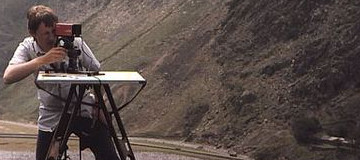
A half-century ago, urban cores of many major American cities went through a protracted process of hollowing out as people flocked to the open space and safety of the suburbs. Now, affluent and educated young people are returning to the inner cities. This new urbanism is a documented socio-spatial phenomenon. Cities like Detroit, Cleveland, New Orleans, and even Atlanta, once foster children of urban blight, are experiencing a revitalization. Part of this redevelopment is adapting city spaces to benefit from natural processes. Managing and utilizing rainwater has become a major component of modern strategies for sustainable, ecologically harmonious city centers.
Land development can have a major impact on the entire hydrologic cycle. Paved, impervious surfaces do not absorb water and are often designed and graded to expel it as fast as possible. This means that during storms, places further down the watershed from areas with little or no permeable surface are subject to flash floods as water that would ordinarily be absorbed in the soil washes over. Further, roads and parking lots often make up a significant portion of paved urban space and they are also the most exposed to hydrocarbons. Oil/gas and other substances leaked or emitted from engines gather on theses surfaces and rain washes them into nearby watersheds. Perhaps most importantly for areas that rely on aquifers for their drinking supply, asphalt and concrete act as barriers between the rain and the groundwater. Even in places that use river water for municipal supply, surface waters are often directly linked to groundwater so that less percolation into the ground reduces stream flows except to points where drainage infrastructure is directed, which is often downstream from water treatment intakes.
One example of a city that is rethinking the way land use interacts with rainwater is New Orleans. Recently, the city won a $141 million grant to construct a resilience district. New Orleans, mostly at or below sea level, has a long history of fighting water, using massive pumps to expel the rain. Now, however, at least one neighborhood will build green space and open canals that hold and absorb the water, rather than impervious surfaces that allow it to pool.
New Orleans is just one of many areas where green space, catchment basins, and beautiful canals are being used. Established cities and new developments alike are getting smart about managing water, our most precious resource.





